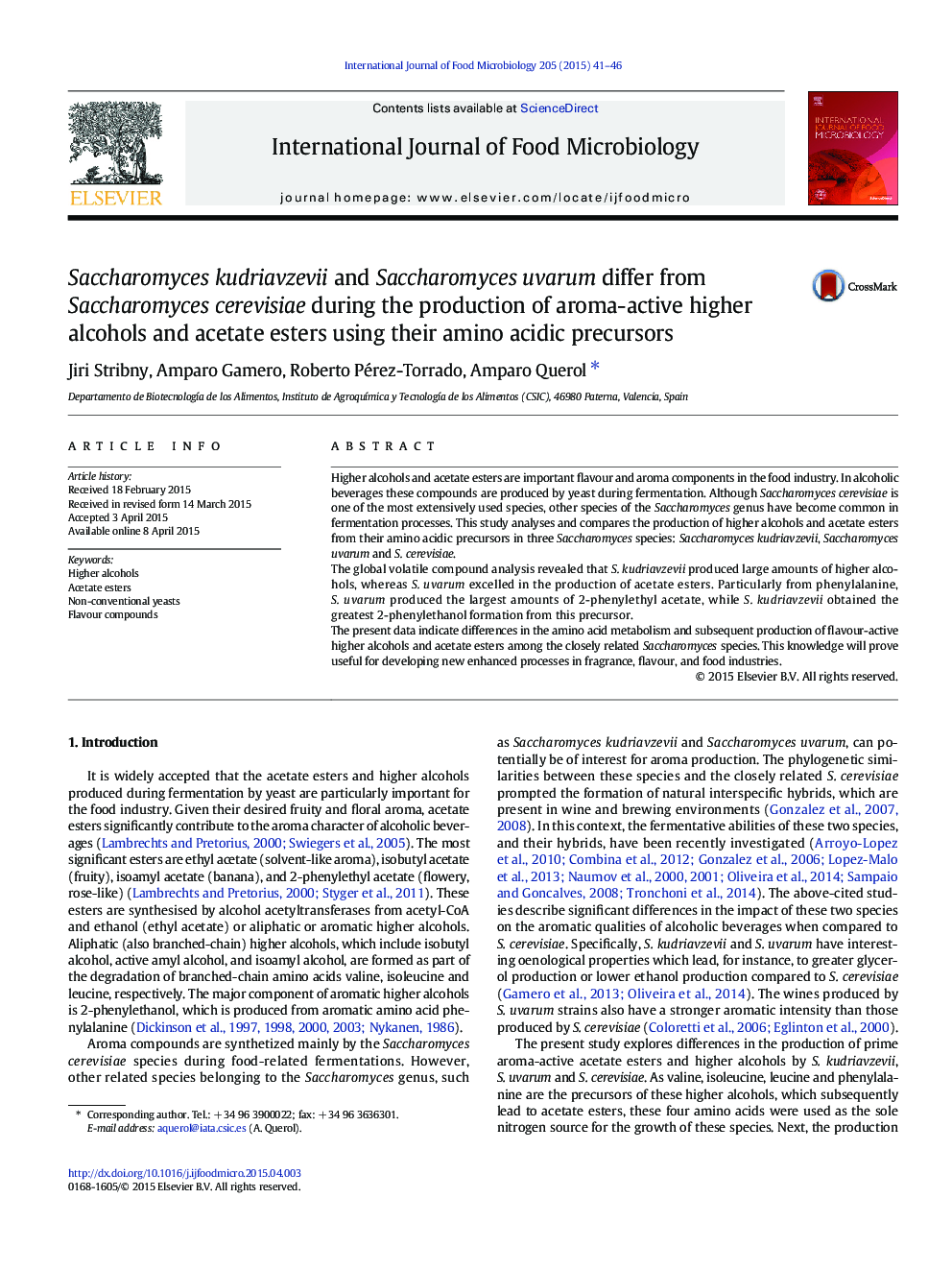| Article ID | Journal | Published Year | Pages | File Type |
|---|---|---|---|---|
| 4366593 | International Journal of Food Microbiology | 2015 | 6 Pages |
•This study was focused on the characterisation aroma production (higher alcohols and esters) using ammonium and four amino acids(Ile, Leu, ValPhe), the main precursors of the higher alcohols and the associated esters, comparing to common wine S. cerevisiae.•S. kudriavzevii is a great producer of higher alcohols while S. uvarum stands out in the production of acetate esters.•Our results suggest that these two yeast species manage the nitrogen metabolism in manners distinct from S. cerevisiae.
Higher alcohols and acetate esters are important flavour and aroma components in the food industry. In alcoholic beverages these compounds are produced by yeast during fermentation. Although Saccharomyces cerevisiae is one of the most extensively used species, other species of the Saccharomyces genus have become common in fermentation processes. This study analyses and compares the production of higher alcohols and acetate esters from their amino acidic precursors in three Saccharomyces species: Saccharomyces kudriavzevii, Saccharomyces uvarum and S. cerevisiae.The global volatile compound analysis revealed that S. kudriavzevii produced large amounts of higher alcohols, whereas S. uvarum excelled in the production of acetate esters. Particularly from phenylalanine, S. uvarum produced the largest amounts of 2-phenylethyl acetate, while S. kudriavzevii obtained the greatest 2-phenylethanol formation from this precursor.The present data indicate differences in the amino acid metabolism and subsequent production of flavour-active higher alcohols and acetate esters among the closely related Saccharomyces species. This knowledge will prove useful for developing new enhanced processes in fragrance, flavour, and food industries.
